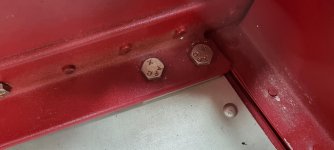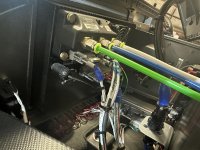Good Afternoon.
I have a GMU 22 which is installed just in front of the vertical stabiliser in my RV-7. Every time I fly I get a yellow/amber warning on the G3X for an AHARS anomaly which can be reset but comes back after a few minutes. Assuming the fault to be based on the close proximity of steel I checked the mounting bolts for the VS and found them to be mild steel. Has anyone replaced these bolts with stainless ones?
I have a GMU 22 which is installed just in front of the vertical stabiliser in my RV-7. Every time I fly I get a yellow/amber warning on the G3X for an AHARS anomaly which can be reset but comes back after a few minutes. Assuming the fault to be based on the close proximity of steel I checked the mounting bolts for the VS and found them to be mild steel. Has anyone replaced these bolts with stainless ones?







